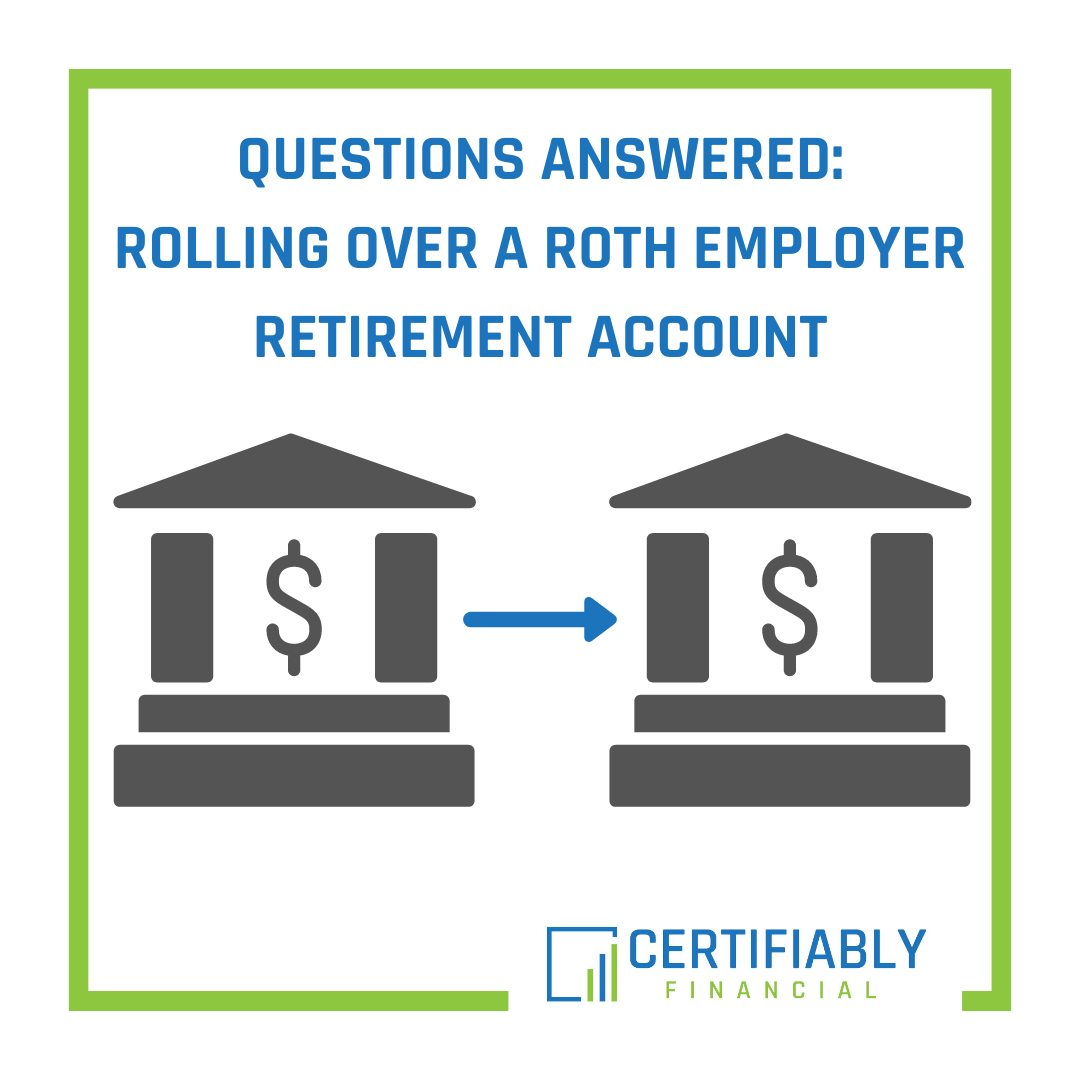Today, I wanted to take the opportunity to clear up the answer to some questions that I’ve been asked a couple of times over the past month regarding whether you can rollover an employer retirement account to an IRA and also make a contribution to the IRA in the same year. The answer to this question isn’t exactly clear without a good understanding of retirement plan rules and evidently there isn’t anything on the internet that does a very good job of explaining it.
Roth IRA
To Roth or Not to Roth
3 minute read
Roth vs Traditional
In a traditional 401(k), you contribute money pre-tax, allow the money to grow tax-deferred, and pay the taxes later when you withdraw the money. With a Roth 401(k), you pay the taxes today, allow the money to grow tax-free, and withdraw the money tax-free in retirement (assuming that you meet the Roth withdrawal rules). For someone in their 20s or 30s who plans to retire in their 60s, that could mean 30-40 years’ worth of tax-free growth and subsequent withdrawals in retirement. If the government doesn’t change the laws, the money that you contribute to Roth accounts today will never be taxed again.
What’s the worst that can happen? You pay taxes on your Roth contributions today at your current tax rate and then you pay taxes on your investment earnings when you withdraw the money in the future at your tax rate at that time? That’s likely not going to be much different than making pre-tax contributions today which will be 100% taxable when you withdraw them in the future. A couple with $1 million in a Traditional pre-tax IRA really has closer to $780,000 available to them, if they’re in the 22% tax bracket during retirement.
Consideration of Tax Brackets
If you think that your tax bracket will be lower in the future than it is today, then making pre-tax contributions might be a better option. You’d rather not pay the taxes while in a higher tax bracket today and be able to defer paying them until you’re in a lower tax bracket in retirement.
Conversely, if you think that you’re in a lower tax bracket today than you will be in retirement, then making Roth contributions may be a better option for you. You’d rather pay the lower taxes today than have to pay taxes later in your working career when you’re earning more money or when you’re in a higher tax bracket in retirement.
Personally, my goal is to be in a higher tax bracket later in life than I am today. If all goes as planned, the taxes that I’m paying now are probably going to be lower than those that I’ll have to pay 20 years from now or in retirement. As you continue to make more money in your career you can always switch from Roth contributions to pre-tax contributions to help save money on taxes, if you need to.
Another thing to consider is if you think that tax rates will increase or decrease in the future. If you think they’ll increase in the future, which would put you in a higher tax bracket than today, then Roth would be a better option. If you think that they’ll go down in the future, then pre-tax would probably be a better option.
Combine Both Strategies
Another option is to make 50% of your contributions pre-tax and 50% of them Roth. This allows you to have some tax diversification in retirement which could come in handy. This option would allow you some tax deductions today as well as tax-free withdrawals in the future.
Advantages of Roth 401(k)
The advantages of a Roth 401(k) over a Roth IRA are
1. There isn’t an income limit to make contributions to a Roth 401(k).
2. You can contribute much more to a Roth 401(k) in a year than you can to a Roth IRA.
In 2018, if you earn $135,0000 as a single filer or $199,000 as a married couple filing jointly, then you cannot contribute to a Roth IRA (phaseouts begin at $120,000 for single filers and $189,000 for those who are married filing jointly). On the other hand, there is no income limit to contribute to a Roth 401(k).
The maximum amount of money that you can contribute to a Roth 401(k) in a year is $18,500 for people younger than 50 years old and $24,500 for those age 50 and older. Please keep in mind that any Roth contributions as well as any pre-tax contributions that you make to your 401(k) count towards these amounts of $18,500 and $24,500. Contributions to a Roth IRA are limited to $5,500 for those younger than 50 and are $6,500 for those age 50 and older. As with a 401(k), you are only allowed to make an aggregate contribution of $5,500 ($6,500 for those over 50) to your IRAs.
Contributing to Roth accounts can provide you with great planning strategies and flexibility in retirement. This is a strategy that most young people should seriously look into and consider implementing as a part of their overall financial plan. However, as with almost everything in finance, it depends on your personal situation.


